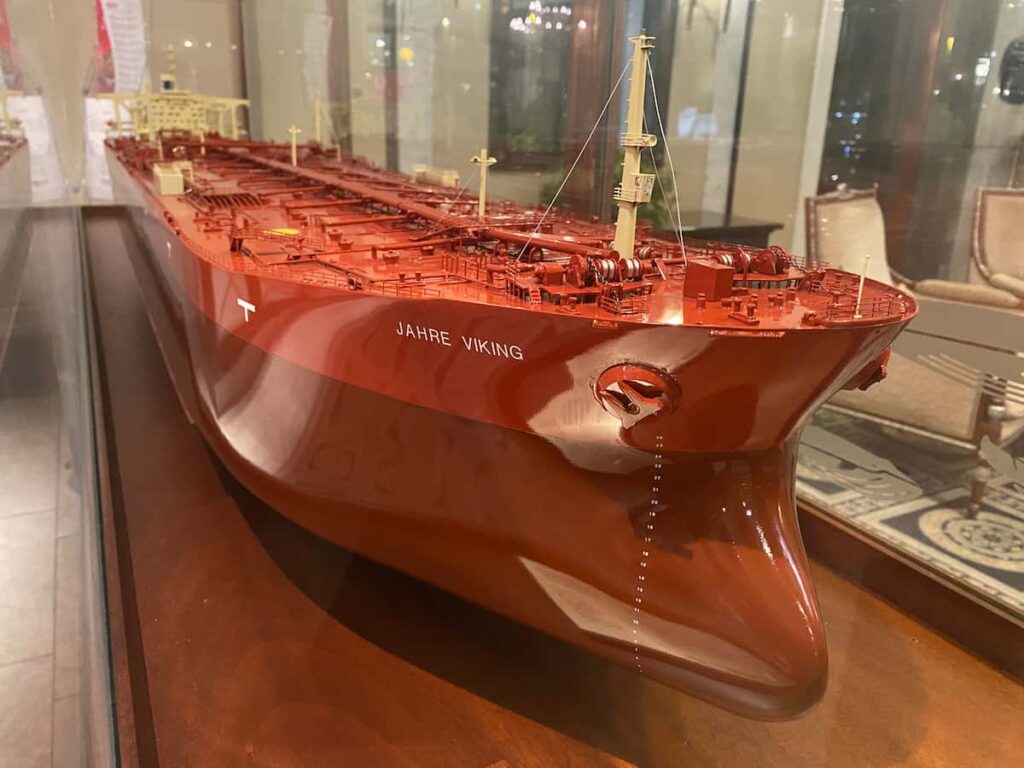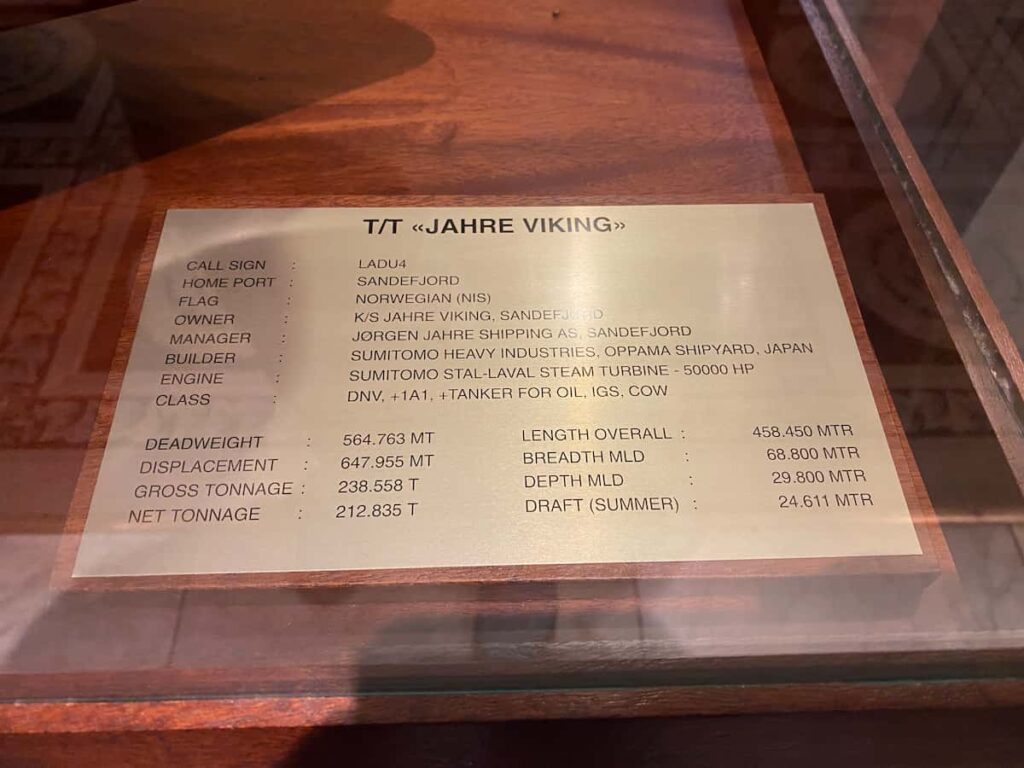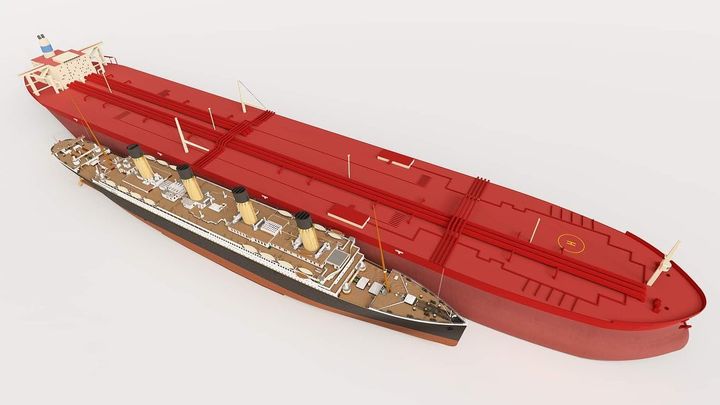The Seawise Giant, also known as Knock Nevis, remains the largest ship ever built in history. This ultra-large crude carrier (ULCC) was constructed by Sumitomo Heavy Industries in Yokosuka, Kanagawa, Japan, between 1974 and 1979.
Launched in 1979, the ship achieved the highest recorded deadweight tonnage. Fully loaded, its displacement reached 657,019 tonnes, making it nearly twice as long as the Titanic.
Overview of the Seawise Giant
Over its lifetime, the Seawise Giant underwent several name changes, including Oppama, Happy Giant, Jahre Viking, and Mont. Built for transporting crude oil along major maritime trade routes, the ship faced operational challenges due to its enormous size.

The vessel required a two-mile turning circle and over five miles to stop, making it impractical for narrow waterways like the English Channel, Panama Canal, or Suez Canal. It frequently traveled around the Cape of Good Hope to reach its destinations.
Key Specifications
| Attribute | Details |
|---|---|
| Length | 458.45 meters (1,503 feet) |
| Beam | 68.8 meters (225.7 feet) |
| Depth | 29.8 meters (97.8 feet) |
| Draft (fully loaded) | 24.611 meters (80.74 feet) |
| Displacement | 657,019 tonnes |
| Carrying Capacity | 4.1 million barrels of crude oil |
| Engines | 8 diesel engines, 110,000 HP |
| Top Speed | 16 knots (30 km/h; 18 mph) |
| Range | 20,000 nautical miles |
The ship’s draft and tonnage made it impossible to traverse major waterways like the Panama Canal. To understand these terms better, explore what ship tonnage means, including its types and use.

History of the Seawise Giant
The Seawise Giant was originally built for Greek shipping magnate Stavros Niarchos. The vessel was first launched as Oppama in 1979 but was renamed multiple times over the years.
To better understand how such ships handle cargo, read about the main spaces on cargo ships and the systems involved in managing massive loads.

Accidents and Repairs
- 1988 Missile Attack: During the Iran-Iraq War, the ship was severely damaged by a missile. After extensive repairs, it returned to service under the name Jahre Viking in 1991.
- 2004 Collision: A collision with a pier in Taiwan resulted in further damage. After repairs, the ship was converted to a floating storage and offloading unit (FSO) and renamed Knock Nevis.
Conversion to Knock Nevis
Following the bankruptcy of its original owner, the ship was acquired by a Hong Kong company and renamed Happy Giant. In 1989, Norwegian shipping magnate Jørgen Jahre purchased and upgraded the vessel, renaming it Jahre Viking.
Upgrades included:
- A new engine.
- Installation of a bow thruster for better maneuverability.
In 2004, the ship was converted into an FSO (Floating Storage and Offloading Unit), with its cargo capacity reduced to 260,000 tonnes. It was stationed off the coast of Qatar, storing crude oil from nearby fields. For insight into the cargo handling systems used on oil tankers, check out cargo handling systems and equipment.
Final Years and Scrapping
The Knock Nevis was retired in 2009 due to declining oil production. In 2010, it was dismantled in Alang, India, after being towed there in pieces because of its size. The dismantling process raised concerns about environmental impacts, as breaking down such a massive vessel posed risks to the local ecosystem.
Legacy of the Seawise Giant
The Seawise Giant continues to symbolize human engineering ingenuity. Its record-breaking size influenced the shipping industry but also revealed the practical and environmental challenges of operating ultra-large vessels.
Impact on Shipping
- Industry Trends: The ship set a benchmark for vessel size, spurring the development of other ULCCs.
- Challenges: Its size limited port access and maneuverability, requiring specialized infrastructure. These challenges contributed to the decline of ULCCs as a sustainable shipping option.
Environmental Concerns
- High fuel consumption led to significant greenhouse gas emissions.
- Handling oil spills and accidents proved more complex due to the ship’s scale.
- Environmental groups advocated for stricter shipping regulations, ultimately contributing to size restrictions in certain waterways.
Did You Know?
- The Seawise Giant was so massive it couldn’t fit through the Suez Canal or Panama Canal.
- Fully loaded, its weight exceeded 724,000 short tons, making it the largest self-propelled ship ever built.
- Types of Gas Carriers as per IGC Code – April 22, 2025
- Wind-Assisted Propulsion Systems (WAPS): A Game Changer for Maritime Decarbonization – February 6, 2025
- 10 Boat Salvage Yards in California – January 25, 2025



